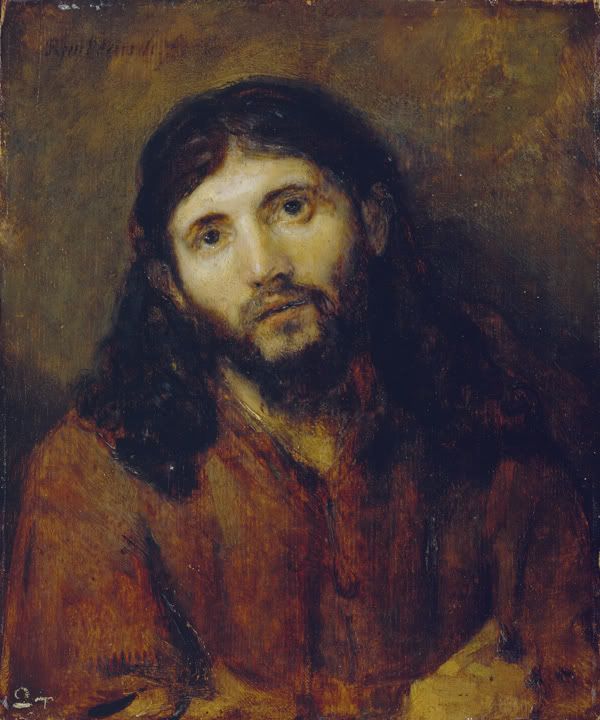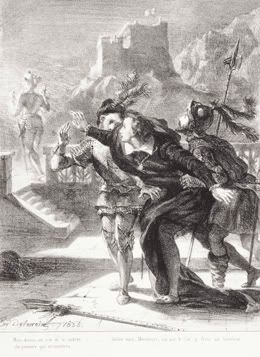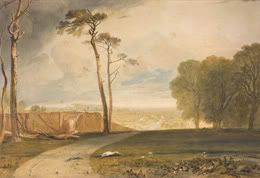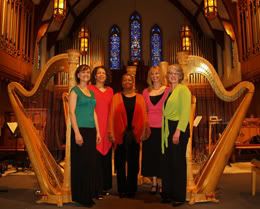|
|
Director's Letter
The DIA is currently going through the American Association of Museums' reaccreditation process. We are just completing the "self-study" phase, and it is a daunting task that results in many boxes of materials. The instructions themselves run to more than 250 pages and cover all aspects of the museum's life: aside from obvious categories like collections stewardship, the study addresses such things as public trust and accountability, mission and planning, leadership and organizational structure, and facilities and risk management. It's a very different enterprise from the one I first encountered in the late 1970s that consisted of a thin exercise book containing, what seemed at the time, lots of boxes to check.
As the museum world has become increasingly professionalized, so the accreditation process has become more thorough. And, even though there is talk from time to time about streamlining the reaccreditation for the big museums--after all, we are the ones who develop and establish much of the best practices in the first place--the current situation would seem to indicate, if anything, movement in the other direction. Still, it's a valuable exercise from which you learn a lot, reappraise aspects of the museum that might otherwise go unexamined, and revamp documents that describe obsolete practices. In our last reaccreditation (1998--I asked for a postponement until the "New DIA" was broken in) much ink was spilled describing the strengths and deficiencies of our Classical and Ancient Near Eastern antiquities, and for a few years we looked to add to these collections. With all that has happened since in the wars in Iraq and with the rampant looting in Italy, Turkey, and elsewhere, we simply no longer acquire in these areas. These collections are adequate for our aesthetic and interpretive goals, and it's just too risky to spend our limited resources on art that may have been stolen and not worth spending the time looking for increasingly rare "safe" examples.
There is usually little question that established institutions will pass muster, but I once served on a reaccreditation committee when the museum under review was smack in the middle of a huge capital project, and there were so many unanswered questions with answers that had policy implications, it was difficult not to come out sounding negative. When accreditation material from other institutions arrives for my review, I always think "Why did I agree to do this?" The materials (six boxes the last time) take a full weekend to go through and the on-site visit two to three days, but I always come away from the exercise refreshed by the level of commitment demonstrated by so many who work in or an behalf of their museum, invariably the enthusiasm and love for the art is almost palpable, and the resourcefulness shown, admirable and inspiring. The last reaccreditation committee I served on was for a museum that had many similarities with the DIA--ex-city department, losing tax-based support--and my conversations with the director and chairman of the board were as beneficial to me as it was to them.
In the DIA's last reaccreditation our Education Department (now Interpretation and Learning) was singled out for praise as a model for other institutions, and I'm confident that situation still pertains. No longer a city department, we have been able to make changes, modernizing and streamlining all areas of our operations. Our exhibitions and programs retain the integrity expected of a major museum, and we have radically changed the DIA's relationship to the broader community. On the other hand, we've gone through a downsizing and staff is stretched even more than usual--we have no bench, as the saying goes--and our long-term financial situation remains unstable. I have to say, though, that I'm really looking forward to what my peers have to say about the DIA.

Graham W. J. Beal
Back to top |
|

Exhibitions
Rembrandt and the Face of Jesus
Through February 12, 2012
Special Exhibition Galleries: South
Biblical themes were a central preoccupation for Rembrandt throughout his life. But the boldest of these depictions came in mid-career, when he introduced a radical shift in the artistic treatment of Jesus. Traditional images of Jesus were based on ancient Greek sculpture and Renaissance imagery, conventions that had been in place for more than a millennium. Rembrandt's early depictions followed these customs, showing Jesus in heroic action scenes or as the embodiment of profound suffering. By the late 1640s, however, Rembrandt achieved a greater spiritual resonance in his work, evidenced by a series of portraits that portrays Jesus as vulnerable and humble, an object of meditation not because of his suffering but through his presence as an affirmation of goodness and a source of deep spiritual inspiration.
Rembrandt was the first Western artist to present Jesus as Jewish, likely based on models from Amsterdam's vibrant Jewish neighborhood where he lived and worked. He was likely influenced by conversations among Protestant theologians researching the historical realities of Jesus's life as a Jewish man and the emergence of Christianity from Jewish tradition. Click here to listen to exhibition curator and DIA curator emeritus George Keyes talk about the show.
Members see the exhibition free, but complimentary reserved, timed tickets are necessary, available at the DIA Box Office, online at www.dia.org, or by calling 1.866.DIA.TIXS (866.342.8497). Remember, there is no handling or service fee when ordering members' tickets. For more information, call the Membership HelpLine at 313.833.7971. For the general public, timed tickets are $16 for adults and $8 for youth ages 6 to 17. A $3.50 charge applies to nonmember tickets not purchased at the DIA.
This exhibition has been organized by the Detroit Institute of Arts, the Musée du Louvre, and the Philadelphia Museum of Art. In Detroit, the exhibition is generously supported by The Cracchiolo Family. Additional support has been provided by the City of Detroit.
This exhibition is supported by an indemnity from the Federal Council on the Arts and the Humanities.
Above: Rembrandt van Rijn, Dutch; Head of Jesus, 1648/1650; oil on oak panel. Detroit Insitute of Arts
Back to top
Detroit Revealed
Photographs, 2000-2010
Through April 8, 2012
Albert and Peggy de Salle Gallery of Photography

| | |
Michelle Andonian, American; Dearborn Assembly Plant, Melissa Coscia Works a Multi Electronic Nut Runner, from Reinvention: Rouge Photographs; 2004 (printed 20110); pigment print. Gift of the artist in honor of Bill Rauhauser
| | 
| | |
Michelle Andonian, End of the Frame Line, 2004 (printed in 2011); pigment print. Gift of the artist in honor of Bill Rauhauser
| |
With work from her series Reinvention: Rouge Photographs, Michelle Andonian continues a nearly century-old tradition of photographing Ford's River Rouge complex as a metaphor for Detroit as the Motor City. Charles Sheeler was the first artist to photograph the Rouge, receiving a commission from Ford Motor Company in 1927, the same year the first cars rolled off the plant's assembly line. Sheeler focused on the industrial landscape and few, if any, autoworkers appear in his photographs.
Robert Frank came to Detroit and photographed the Rouge in 1955 as part of a series that would become his defining book, The Americans. He shot workers inside the plant laboring on the assembly line but also captured their everyday lives away from the factory in restaurants, parks, and the streets of Detroit.
Andonian continued the tradition of documenting activity at the Rouge, receiving permission from Ford to photograph the transition from the assembly of the Mustang to that of the F-150 truck. In keeping with the documentary nature of her work, she photographed the end of this chapter of automotive history in black and white. When it came time to photograph the new line, she switched to large-scale color images as a means of representing the forward-looking, state-of-the-art facility.
Examples of earlier photographic work that represent Detroit and the auto industry are on view in a special area adjacent to the larger photography gallery. This supplement includes images taken by collector James Duffy as he traveled the streets of Detroit. His collection can be seen in the Gift of a Lifetime exhibition on the second floor. For an interview of Michelle Andonian and curator Nancy Barr, click here.
This exhibition has been organized by the Detroit Institute of Arts. Support has been provided by Quicken Loans and Team Detroit. Additional support has been provided by the City of Detroit. Support for the catalogue has been provided by Furthermore: a program of the J. M. Kaplan Fund.
Back to top
 Gift of a Lifetime Gift of a Lifetime
The James Pearson Duffy Collection
Through March 18, 2012
Special Exhibitions Central
While mainstream art of the 1960s was dominated by pop art and grid-obsessed minimalism, the 1970s saw an explosion of styles embracing nontraditional materials, mixed-media constructions, and often a sense of whimsy. Collector James Duffy was deeply engaged in these new aesthetic concerns, reflected in his acquisitions in Detroit and New York, featuring ever-widening and oft-surprising materials, a disregard for surface beauty, and an emphasis on the process of making art that would celebrate the touch of the creator's hand. Linda Bengalis created wax "paintings," Joe Zucker incorporated cotton balls in his work, and Brenda Goodman used feathers.
Michael Luks's Rabbit represents many of the era's ideas. The list of media is extensive and wide-ranging: wire, carpet, cable, burlap, rubber hose, PCV pipe, couplings, and wood. Two rolled lengths of carpet represent a heavy, rounded body while a sinuous cable outlines head, ears, and arching back. This rabbit is not the soft, furry variety found in children's literature but a hardy and resilient survivor seen as if squeezing through a constricting pipe or tube. Luks says that the rabbit, a consistent theme in his work, has "interesting and peculiar patterns in its survival and does in fact relate to my art whether or not it reflects life in Detroit or problems here....It is something about how it slips and slides and gets under and gets by and so forth."
Above: Michael Luks, American; Rabbit, 1974; wire, carpet, cable, burlap, rubber hose, PCV pipe couplings, wood. Bequest of James Pearson Duffy
Back to top
Once Upon a Time
Prints and Drawings that Tell Stories
Schwartz Galleries of Prints and Drawings
Opens December 21

| | |
Eugène Delacroix, French; Hamlet Attempts to Pursue the Ghost of His Father (Act I, Scene IV), 1835; lithograph. Founders Society Purchase, John S. Newberry Fund
| |
Storytelling is central to all cultures throughout time, transcending language and finding a place in all the arts, including the making of pictures. In this exhibition, all the images were created to illustrate specific stories or tell more general tales that would have been recognized by a general audience. In both cases, the artists wanted their work to be "read" as clearly as possible.
Some of the stories or characters are familiar to many: Rapunzel, a long-haired fairy-tale heroine; Hamlet, Shakespeare's tragic figure; Moby Dick, Herman Melville's great whale. Particular lines of text inspired many of the works and appear as informative captions along with the images, while others that have no words attached still convincingly convey their meaning.
In some cases, artists were asked by publishers to work on a project. In others, artists chose their topic because of some personal affinity for the subject. Regardless of era, many artists dealt with making older stories meaningful for contemporary audiences. Helen Frankenthaler's woodcut Tales of the Genji, based on an eleventh-century Japanese novel, looks modern because of the late-twentieth-century abstract style in which she worked. Abraham Bosse lived in seventeenth-century France and Jim Dine in the modern-day United States and England, but when both tackled their projects--one a biblical subject (The Wise and Foolish Virgins) and the other a nineteenth-century English novel (Oscar Wilde's The Picture of Dorian Gray)--they set the scene and dressed their characters in the fashions of their own times.
Back to top |
|
New on View in the British Gallery
Through March 4, 2012
As a historically significant and emotionally meaningful English subject, little rivals the importance of the town of Battle, its abbey, and the Battle of Hastings. Likewise, when seeking preeminence in nineteenth-century British landscape art, Joseph Mallord William Turner cannot be outranked. His exceptional hand and creative vision were equaled by none.
The DIA collection lacks any paintings by Turner, and this loan offers museum visitors a rare opportunity to view a work by this towering figure in British art. Turner's genius was recognized during his teenage years as he progressed from his training as a history painter to a landscapist and, finally, to a visionary artist whose mature style serves as a precursor of modernism. His later work is celebrated for its loose brushwork and dazzling display of light and color.
 | | |
Joseph Mallord William Turner, English; View in Sussex, Battle Abbey, the Spot Where Harold Fell, 1815; watercolor over graphite. Anonymous loan
| |
Battle Abbey, begun by William the Conqueror in 1070, and the town seen in the distance, also called Battle, are named for the momentous event, the Battle of Hastings, that unfolded on the site October 14, 1066. The battle was the last time an invading army was victorious on British soil. The Anglo-Saxon King Harold II died in the defeat of the forces of Duke William of Normandy. Instead of depicting the tremendous carnage of that day, Turner shows the ruins as they appeared during his time. The once great battlefield and later powerful abbey look bucolic and undisturbed by nothing more than a dog scampering after a rabbit.
According to one version of the abbey's history, William built the complex per papal request to atone for the lives lost in the great battle. Other interpretations refer to a self-promise William made in the event of victory. Battle Abbey was among the wealthiest of English Benedictine monasteries until the mid-1530s, when Henry VIII seized and redistributed church properties. Henry gave Battle Abbey to his friend Sir Anthony Browne, who promptly destroyed the church and many other buildings and commenced to build a private residence. The remains of Battle Abbey continue to be recognized as a site of cultural importance to this day.
Turner was commissioned to create a series of watercolors for the wealthy John "Mad Jack" Fuller, who might have been planning to write a history of East Sussex, the district he represented in parliament from 1801 to 1812. Already an acclaimed and successful artist, Turner completed thirteen watercolors of the region. Eight were reinterpreted as prints, six of which, including Battle Abbey, were published in 1820 as part one of the portfolio Views in Sussex. Part two was never completed. Until last year, this watercolor, although known from the prints, was thought to have been lost.
Back to top |
|
Holiday Happenings
The DIA has special holiday hours this month to accommodate the season's festivities, beginning with Noel Night, Saturday, December 3. The museum is open until 9 p.m. for the Cultural Center's thirty-ninth annual event, featuring more than sixty area venues, including the DIA, that open their doors to the public free of charge. Music and dance performances can be found throughout the building: big band sounds and swing in Rivera Court, acoustic music in Kresge Court and the Lecture Hall, young singers and dancers in Prentis Court. In the studio, decorate gingerbread cookies with icing and beads to create a one-of-a-kind puppet at a special drop-in workshop. And don't forget the Ice Scraper Challenge out on the Woodward Plaza, where Wayne State and CCS students carve cool sculptures. The exhibition Jesus and the Face of Rembrandt is not open on Noel Night.
 | |
Also featured this month are stories of Hanukkah, Christmas, and Kwanzaa, at 2 p.m. on Sundays, December 4, 11, and 18, respectively. Two of the popular Brunch with Bach concerts are scheduled: the harpists of Angelaires Again playing pop tunes and classical numbers arranged for harp on December 11, and the violin, flute, and piano trio of Kyoko Kashiwagi, Vana Staples, and Angelina Pashmakova performing music by J. S. Bach and Johannes Brahms on December 18.
The DIA is closed Christmas Eve and Christmas Day, December 24 and 25, and New Year's Day, January 1, but between the holidays the museum is open every day: Monday through Thursday, December 26 to December 29, to 7 p.m.; Friday, December 30, until 10 p.m., and Saturday, December 31 until 5 p.m. Special activities during the week include two different puppet shows and extra drop-in workshops. Check the DIA website for times and dates and additional information on all holiday events.
Back to top |
|
Detroit Film Theatre
A posting last month on the DIA Facebook page asked people which painting they would most like to jump into if they could. Bruegel's The Wedding Dance narrowly bested Bouguereau's The Nut Gathers as the most popular choice. It is only fitting then that the DFT features a film on its winter schedule that explores what happens when people enter the world of another Bruegel painting, this time The Way to Calvary.

| |
The Mill and the Cross (left), showing the weekends of January 20 and 27, has been called by one critic a "unique, immersive museum-meets-cinema experience." In an extraordinary imaginative leap, the film explores what occurs when The Way to Calvary comes alive around a visitor, who observes the artist as he sketches the very reality the individual is experiencing. Setting the story of the Crucifixion in sixteenth-century Flanders during the brutal Spanish inquisition, director Lech Majewski uses sophisticated computer technology to create a brilliantly complex and fascinating multilayered dreamscape that melds art, history, and religion with the joys and struggles of ordinary people.
The DFT opens the season on January 13 with the Finnish film Le Havre, the story of aging shoe-shiner Marcel (Andre Wilms), who creates a temporary safe haven in a small Normandy town for an illegal immigrant (Blondin Miguel).
For the complete winter DFT schedule, visit the DIA's website later this month. Back to top |
|
Coupons
Click here to find coupons for savings on tickets for Rembrandt and the Face of Jesus exhibition, fountain drinks at CaféDIA and Kresge Court, museum shop purchases, and the price of a Family Plus membership. Coupons are valid December 4 through January 19, 2012, except the one for exhibition tickets, which expires December 23.
Receive $6 off Rembrandt and the Face of Jesus tickets
There's a limit of four per person and coupon must be presented at time of purchase. Does not apply to group reservations.
Get a free fountain drink at either CaféDIA or Kresge Court with a purchase of $6 or more.
No other discounts can be combined with this offer and limit one coupon per transaction.
Purchase a Family Plus membership (regularly $110) for $99.
At the museum shop, take 20 percent off your next purchase
Offer does not apply to gift cards or discounted merchandise. Cannot be combined with other discount offers.
Back to top |
|
|
|
|
Tax Credit
Help us maintain our high-quality programs and get a 2011 tax deduction in the process.
The state of Michigan allows a partial tax credit for individual charitable contributions to the DIA. For each charitable contribution, the credit is equal to one-half the contribution amount, up to $100 ($200 if married and filing jointly). Your donation is tax-deductible from your federal income tax and may qualify for this Michigan income tax credit, which expires December 31.
Donations to the DIA may also reduce your Michigan Business Tax liability. A key provision in Michigan's Business Tax law provides for a 50 percent tax credit of an amount in excess of $50,000 in corporate contributions to the DIA. The credit is capped at $100,000 per year. Please consult your tax advisor regarding tax credits to your personal income tax or the Michigan Business Tax.
Donations to the DIA support family programs, music series, and art-making activities inside the museum, as well as events in the community, including our popular Inside|Out exhibitions, now in its second year, and art-based activities in senior centers, Children's Hospital of Michigan, and the John D. Dingell Veterans Administration Hospital, among other groups.
Your gift of $10, $50, $125, $250, or any amount you are able to contribute is greatly appreciated.
Click here to donate now. Back to top |
|
|
Detroit Institute of Arts
5200 Woodward Avenue
Detroit, Michigan 48202
www.dia.org
313.833.7900
Comments or questions about the newsletter? Please contact us: comments@dia.org
ADMISSION
$8 adults, $6 seniors, $4 children
The museum is free for members
Contact the Membership HelpLine at
313.833.7971 or membership@dia.org
For group sales (15 or more) contact 313.833.1292 or dia.org/grouptours
CATERING & RENTALS
Call 313.833.1925 or
catering@dia.org |
HOURS
Museum
Mon, Tue CLOSED
Wed, Thur 10 a.m.-4 p.m.
Fri 10 a.m.-10 p.m.
Sat, Sun 10 a.m.-5 p.m.
PARKING
Valet parking is available at the Farnsworth entrance on Fridays, Saturdays, and Sundays, during regular museum hours. The price per car is $8.
Lighted, secure self-parking is available in the Cultural Center parking lot, between John R and Brush, behind the museum.
Ford Free Second Sundays are generously supported by the Ford Motor Company Fund. Next Ford Free Sunday Dec. 11. |
CaféDIA
313.833.7966
Wed, Thur 11:30 a.m.-2:30 p.m.
Fri 11:30 a.m.-2:30 p.m., 5-9 p.m.
Sat, Sun 11:30 a.m.-3 p.m.
Kresge Court Coffee Stop
Wed, Thur 10 a.m.-3 p.m.
Fri-Sun 10 a.m.-4 p.m.
Museum Shop
313.833.7944
Open during museum hours |
|
|
|
|
|


















